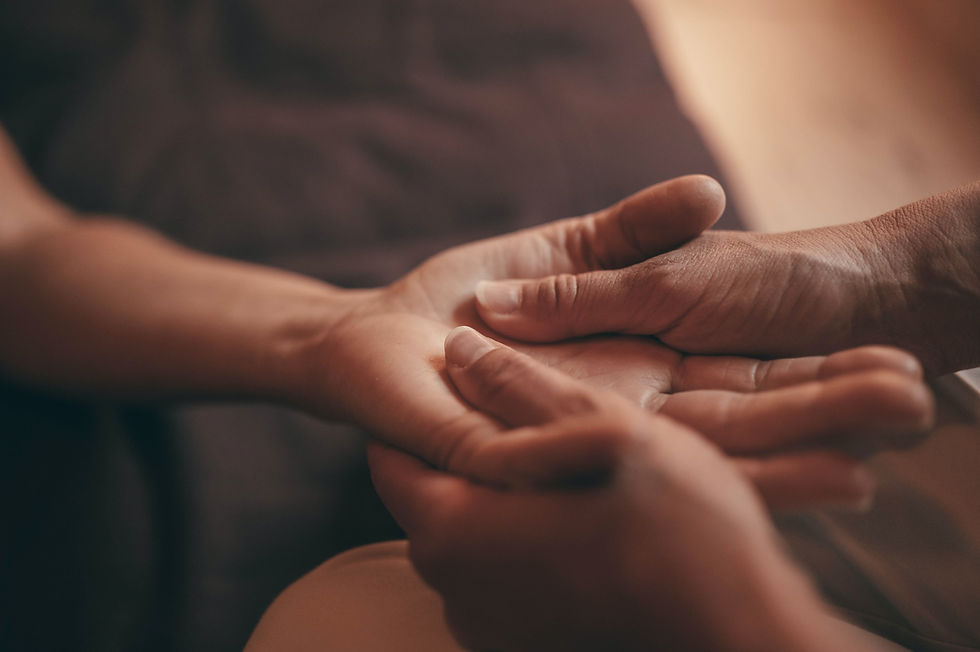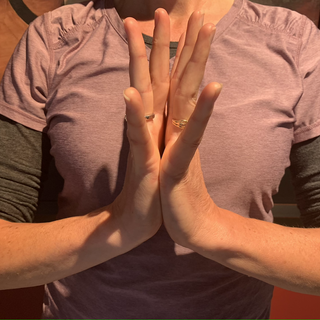Bent Moment - hands & wrists
- bentmatyoga
- May 27, 2021
- 4 min read
Updated: Oct 11, 2022

Our hands - such an important aspect of our life and we use them a lot!
This week's blog is as a request, if you have a particular area you want to work, let me know…
Pain in the hands and wrists can come from overworking the area, repetitive stress, inflammation, osteoarthritis and the more serious, while recovering from a break or fracture. How do we get relief into such a tight knit area? Direct blood and oxygen to where it is needed to heal. On a side note, practicing these stretches will benefit discomfort in the arms, elbows and starts to access the shoulders. Hydration needs to be mentioned here as well, without proper hydration, your hands are likely to hurt eventually - go drink that glass (or two) of water.
There are a multitude of ways to direct blood where we need it to go and only so much we can touch on in a blog post, but these are the basics
Check in with the mobility of your hands and wrists:
Place your palms together in front of your chest, pressing the base of the palms into each other, and bring the wrists down in line with the elbows (keep the chest broad, shoulders back)
Are you able to bring the wrists down?
Do the bases of your palms start to move away from each other?
Are there any shooting pains?
Make a loose fist and then SPREAD the fingers away from the hand as far as they'll go, does the hand feel tight?
If any of the above situations were difficult or tight for you, the following stretches are going to help.
How to find relief (free style):
Place the palms together in front of your chest, press finger tips, knuckles and all of the hand into each other. Lengthen the fingers away from the hands.
If the wrists are still above the line of the elbows, keep the base of the palms pressing firmly into each other rather than allowing them to separate to bring them lower, over time the range of motion will increase.
Press as much into the hands that you feel a tightness of the muscles within the hands, almost a bringing in of the muscles closer to the bone.
Practice this regularly throughout the day or even at night if your hands wake you up in discomfort.
How to find relief (with a little more control):
This option brings the bones and muscles of the arm into the equation
Stand with your side near a wall, placing your palm flat against the wall with the arm straight, fingers pointing upward. If you are able, have the wrist the height of the shoulder; if this is too intense for your hand, increase the height of your wrist to above the height of the shoulder until you are able to firmly press the palm into the wall but still get a stretch.
Pressing firmly into the fingertips, knuckles and entire palm, spread the fingers away from the palm. Use the pressure of the hand against the wall to pull the tricep (middle outer upper arm) back towards the shoulder as you roll the shoulder blade onto the back and bring the front of the armpit forward.
If you want to access the wrists and arms more, next rotate the hand back to approximately a 20-22° angle, moving the wrist behind the line of the shoulder if needed. Proceed with the above instructions of working with the hand and arm.
Then rotate to a 45° angle, then a 70° angle and finally a 90° angle (fingers pointing down, wrist is below the height of the shoulder if necessary). Working the hands and outer upper arm as described. Only rotate to your ability.
Repeat with the opposite hand and arm.
Assistance:
Unable to get the entire hand against the wall or the other hand - the secret is to spread the fingers out. Press into the top of the palm (closest to where the fingers begin), lift the fingers back and lengthen the fingers - while keeping the extension, lay the lengthened fingers back down against the wall or its partner.
Cramping - as much as we don't enjoy it when our hand cramps, right now it's not a bad thing. Your hands/arms aren't used to working this intensely, over time it will become easier. Come out of the stretch, shake out your hands and return to the stretch when you're ready.
How it helps:
Oxygen rich blood brings healing - of course there's already blood in your hands and arms, but how do you concentrate it to exactly where you want it to be? - You contract the muscle.
Opening up the joints - as with so many areas of the body, we don't often fully use a joint, opening it up to it full capacity. If you look at a resting hand, the fingers naturally curl inward, and while that's the way a resting hand should be, it is allowing a shortening of muscles along the inside of the curve if that's all that hand ever does.
Injured muscle or bone - an injury needs to be respected. Rushing into doing these exercises before the area has had a chance to start healing will only increase the time needed to heal. Then concentrating oxygen rich blood to the area will help along the road to being fully healed. I can speak from experience this method helped heal a very painful bone bruise of my forearm.
Creating a healthier body can be overwhelming...
Taking one moment at a time to relieve an ache or pain can make a goal more achievable, and worth your time.
Wishing you great health, Tanya

Tanya is a certified Iyengar Yoga teacher based out of Abbotsford, BC Canada. She has been teaching since 2015, strictly online since March 2020. Tanya volunteers her time as a board member for the BKS Iyengar Yoga Association Vancouver. Her greatest joy is being able to help discover movement.











Comments